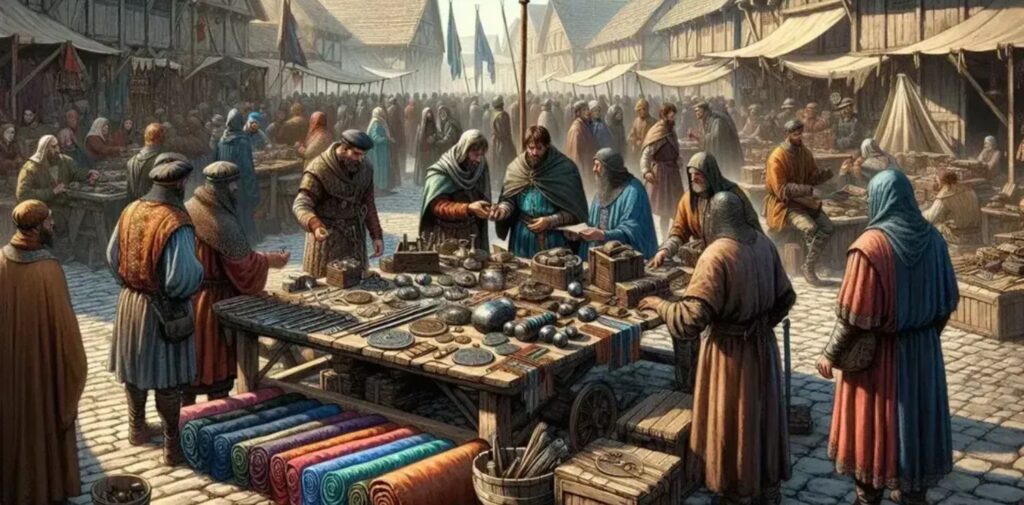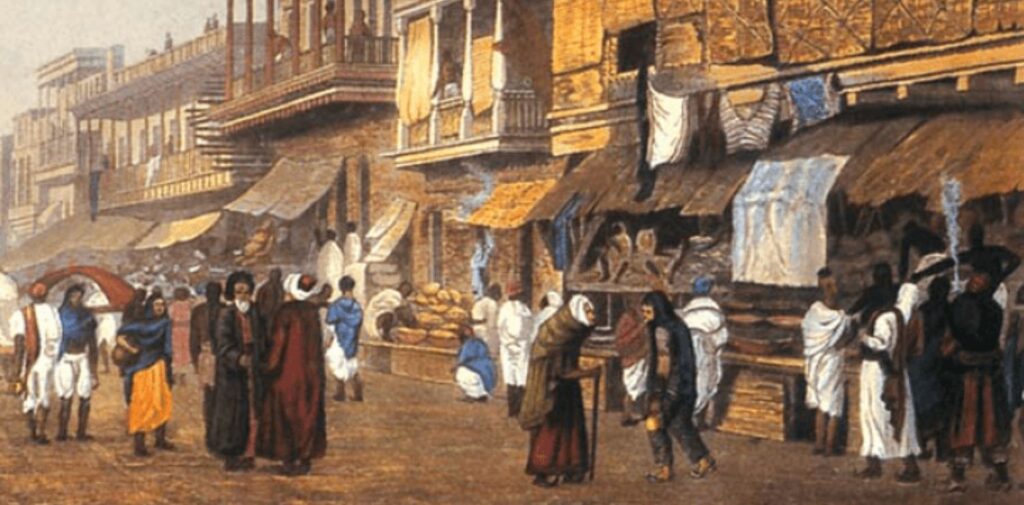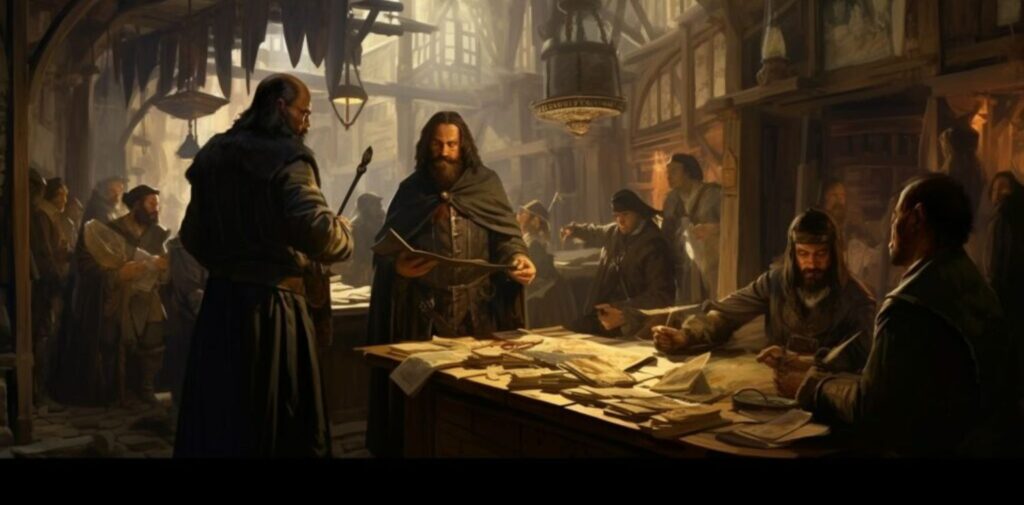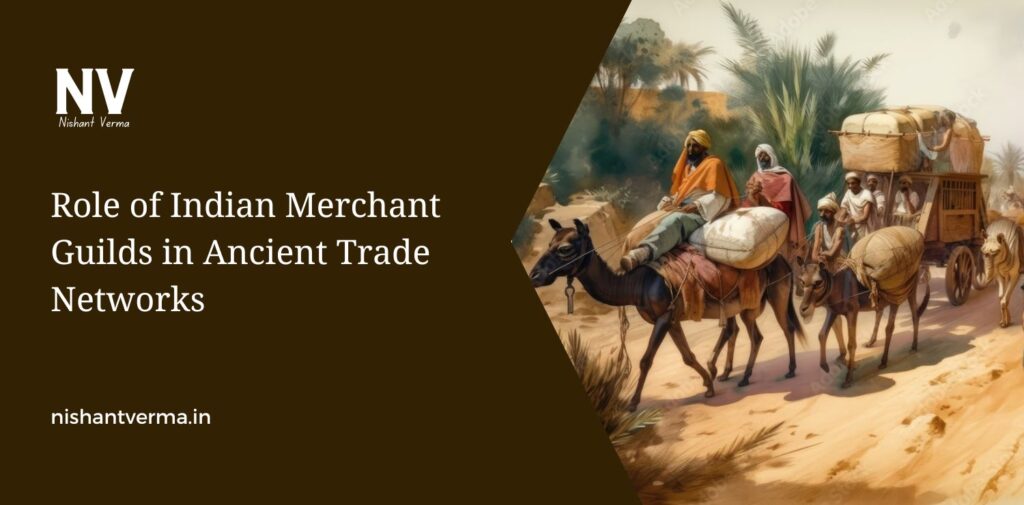India has a long and rich history when it comes to trade and commerce. From ancient times, Indian merchants have been involved in trade, both within the country and with other parts of the world. One of the most important aspects of trade in ancient India was the role of merchant guilds. These guilds were powerful groups of traders and businesspeople who played a key role in shaping the ancient economy and trade networks.
In this article, we will learn about Indian merchant guilds, how they worked, and the important role they played in ancient trade networks. The article will break down these concepts in simple and easy-to-understand language so that anyone, even young readers, can enjoy and learn about this fascinating part of India’s history.
What Are Merchant Guilds?
First, let’s understand what a merchant guild is. A guild is a group of people who come together for a common purpose. In the case of merchant guilds, these were groups of traders who worked together to carry out business, protect their interests, and make trade easier and safer. Think of it like a club where all the members are traders, and they work together to make sure their trade runs smoothly.
Guilds in ancient India were not just about selling goods; they were responsible for managing trade, setting prices, ensuring fairness, and helping traders when needed. They also helped in resolving disputes between merchants, making sure that trade was done honestly and fairly.

The Importance of Trade in Ancient India
India has always been a land of rich resources. Its natural wealth, such as spices, cotton, silk, precious stones, and metals, made it an attractive place for trade. From the ancient times, India was connected to trade networks that stretched across Asia, the Middle East, and even Europe.
Merchants in India were known for their skills in trading goods both within India and with people in far-off lands. Some of the most famous trading centers were located in cities like Pataliputra, Ujjain, Taxila, and Madurai. These places were not only centers of learning and culture but also bustling hubs of trade and commerce. And the merchants who traded in these cities were often part of guilds.
How Did Merchant Guilds Work?
The merchant guilds in ancient India played a very important role in facilitating trade. These guilds were made up of several small and large traders who formed a close network. Here’s how they worked:
Organizing Trade
Merchant guilds helped organize trade by bringing together traders from different regions and even different countries. These guilds would often control the trade of specific goods, such as spices, textiles, or metals. For example, a guild in a coastal city like Kolkata might control the trade of salt or spices, while one in the northern parts of India might focus on silk and wool.
The guilds were also responsible for managing the supply and demand of goods. They helped make sure that there were enough goods for everyone and that the prices were fair. Sometimes, they even set prices for certain goods to make sure that traders didn’t take advantage of customers.
Protecting Traders
One of the key roles of the merchant guilds was to protect the interests of their members. Since merchants often traveled long distances across dangerous lands, the guilds helped protect them. They would arrange for safety measures and provide guards to protect goods from thieves and robbers.
In some cases, the guilds also had agreements with local rulers to ensure that trade was protected. Rulers understood the importance of trade for their economy and would provide support for merchants to carry out their work without fear.
Setting Rules and Regulations
The guilds also had their own set of rules and regulations that merchants had to follow. These rules helped keep the trade organized and ensured that the merchants worked fairly. For example, they might have rules about how goods should be weighed, how much should be paid for certain products, and how disputes should be settled.
These rules helped merchants avoid cheating and unfair practices. If any member of the guild was caught breaking the rules, they could face penalties or even be expelled from the guild.
Offering Credit and Loans
In ancient times, trade often required large amounts of money, especially when merchants had to travel long distances. Merchant guilds provided credit or loans to their members, helping them buy goods or pay for their travels. This was important because merchants didn’t always have the money upfront to buy the goods they wanted to sell.
The guilds acted as a kind of financial support system, ensuring that trade could continue smoothly even when merchants didn’t have enough money on hand.

Training New Merchants
Guilds were also places where new merchants could learn the skills they needed to be successful in trade. Older, more experienced merchants would teach younger ones about how to conduct business, manage goods, and even learn about the markets. This knowledge would be passed down through generations.
Through this system of mentorship and training, merchant guilds ensured that there was always a new generation of skilled traders who could carry on the tradition of trade in ancient India.
The Role of Merchant Guilds in Trade Networks
Now that we understand how the guilds worked, let’s look at how they were connected to ancient trade networks. India has always been an important part of global trade, and merchant guilds were the backbone of these trade networks.
Connecting India with the World
Indian merchants, through their guilds, were involved in trade with many different countries. They traded goods with people from places like Rome, Greece, China, and Southeast Asia. The famous Silk Route that connected China to Europe also passed through India, and Indian merchants played a key role in this route.
India was especially known for its spices, silk, and cotton. These were highly sought after by other countries. In return, Indian merchants brought back goods like gold, silver, and precious stones from other parts of the world. Guilds played a major role in making sure that these goods were exchanged smoothly and that trade continued without interruption.
Supporting Regional and Long-Distance Trade
Merchant guilds helped not only with local trade within India but also with long-distance trade across the seas and through the land. In places like Cambodia, Sri Lanka, and Arabia, Indian traders had established trade relations.
In the coastal regions, such as Gujarat and Tamil Nadu, merchant guilds helped organize maritime trade. They built ships, organized voyages, and established trade relations with people across the seas. Coastal cities like Malabar and Mangalore were major trading hubs.
Promoting Cultural Exchange
Trade was not just about goods; it was also a way for cultures to interact. Through their long-distance trade, merchants from different parts of India and the world came into contact with different ideas, art, and religions. For example, India’s trade with Central Asia and China led to the exchange of ideas in Buddhism and Hinduism.
Many merchants, especially those involved in sea trade, helped spread Indian culture, art, and religion to places far beyond India’s borders. Indian goods, such as textiles and metal crafts, were highly valued, and this exchange of goods helped spread Indian culture.

Decline of the Merchant Guilds
Although merchant guilds played a major role in ancient trade networks, their importance began to decline around the 12th century. This decline happened due to several factors, including the invasion of foreign powers like the Mughals and changes in trade routes.
As the Mughals took over large parts of India, they introduced new forms of governance and trade. European colonial powers, such as the Portuguese, Dutch, and British, also began to dominate the seas and control trade routes, which reduced the influence of Indian merchant guilds.
Conclusion – Indian Merchant Guilds
The merchant guilds of ancient India were a vital part of the country’s trade networks and economy. They helped organize trade, protect merchants, set rules, and train new traders. They connected India to the world through land and sea routes, promoting not just commerce but also cultural exchange. These guilds were responsible for the success of India’s economy and the spread of Indian culture across Asia and beyond.
Although the influence of these guilds has faded over time, their role in ancient trade remains an important part of India’s rich history. The success of these guilds shows us the power of cooperation, organization, and fair practices in building strong economies and connecting people across the world.




